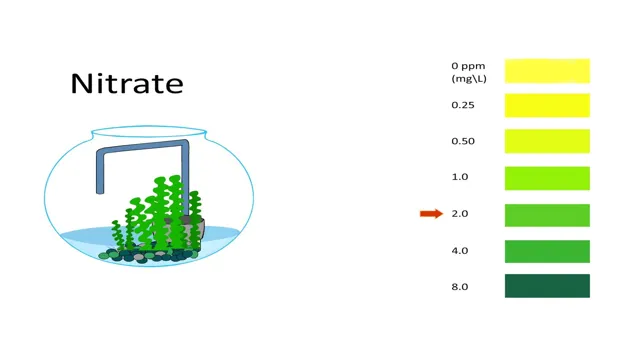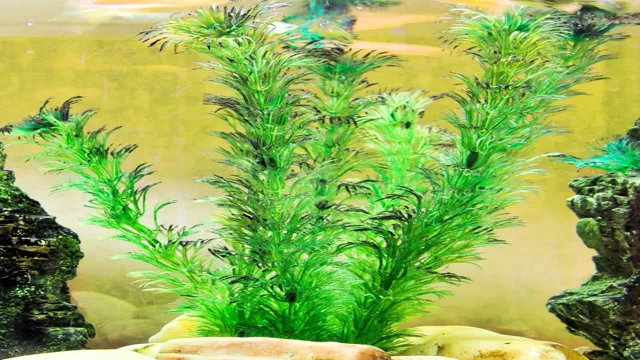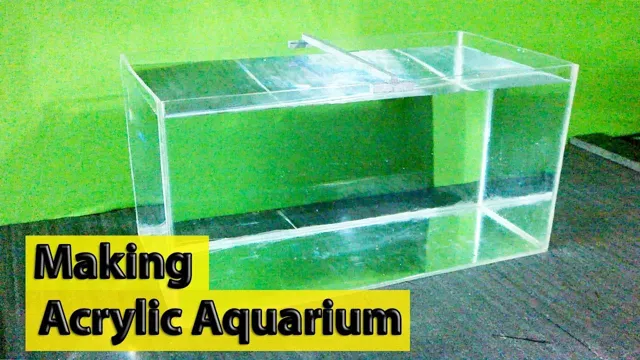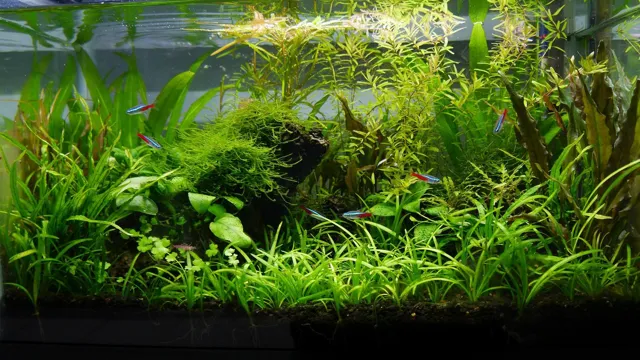How to Fishless Cycle an Aquarium: A Step-by-Step Guide for Beginners

Have you ever heard of fishless cycling an aquarium? It’s a process that’s gaining popularity among fish keepers as a way to establish a healthy environment for their aquatic pets. Essentially, fishless cycling is the practice of setting up an aquarium and allowing beneficial bacteria to grow and establish themselves before introducing any fish. This ensures that the water conditions are safe and stable for the fish.
Think of it as building a strong foundation for a house before moving in furniture and decorations. Without a strong foundation, the house may look nice, but it won’t be stable and sustainable in the long run. Similarly, without fishless cycling, an aquarium may look pretty, but it can lead to poor living conditions for the fish, even leading to illness or death.
Fishless cycling is simple and easy to do, and it’s a great way to give your fish the best possible start in their new home. It involves adding a source of ammonia to the water, which feeds the beneficial bacteria and allows them to grow. These bacteria break down the ammonia into nitrites and then nitrates, which are less harmful to fish.
Once the nitrates are under control, you know it’s safe to add fish to the aquarium. In summary, fishless cycling an aquarium is a crucial step in keeping your aquatic pets healthy and happy. By taking the time to establish a healthy environment, you’re giving your fish a strong foundation for their new home.
So, if you’re considering setting up a new aquarium or adding new fish to an existing one, make sure to consider fishless cycling first. Your fish will thank you for it!
What is Fishless Cycling?
Fishless cycling is a process that allows you to establish a healthy environment for your aquarium without causing harm to any fish. This is especially crucial for new aquariums as it takes some time for the necessary bacteria to form in the water that is needed to break down fish waste. To begin the fishless cycling process, add an ammonia source, such as household ammonia or fish food, to the tank to provide food for the beneficial bacteria to grow and thrive.
Test the water regularly for ammonia, nitrite, and nitrate levels to ensure they are at the optimal range for the bacteria. As the bacteria break down the ammonia, it will turn into nitrite, which is also toxic to fish, but eventually, it will be converted into nitrate, which is safe for fish. This entire process can take up to 4-6 weeks, so patience is key.
By the end of the process, you should have a healthy and thriving environment for your aquarium without putting any fish at risk.
Bacteria Build-up
Fishless cycling is a process of establishing healthy bacteria in your aquarium’s substrate and filter before adding any fish. This is important because fish produce waste that can quickly build up and become toxic, harming your new aquatic pets. Through fishless cycling, beneficial bacteria colonies grow, breaking down ammonia and nitrite into less harmful nitrates.
This process can take several weeks to complete, so patience is key. There are many methods to fishless cycle, such as adding pure ammonia, fish food, or a bacterial starter product. It’s important to monitor the water parameters with test kits during this process.
Once your aquarium’s water parameters have stabilized and ammonia and nitrite levels are consistently zero, you can safely introduce your fish to their new home. Overall, fishless cycling is a crucial step in providing a healthy environment for your fish and can help prevent potential problems from harmful bacteria build-up.

Fishless Cycle Advantages
Fishless cycling is a method of preparing a new aquarium for fish by cultivating a colony of beneficial bacteria in the aquarium water. The idea is to mimic what happens in nature when a pond or lake is established and gradually populated by fish and other aquatic life. The process involves adding a source of ammonia to the aquarium, which feeds the bacteria and allows them to grow and thrive.
This avoids the need to introduce live fish to the tank immediately, which can stress and potentially harm them. The advantages of a fishless cycle are many, including protecting the health of your fish, avoiding unnecessary water changes, and creating a more stable and balanced environment for aquatic life. It does require a bit of patience and attention to detail, but the results are well worth the effort.
So, if you’re planning on setting up a new aquarium, consider using the fishless cycling method for a healthier and happier tank.
Step-by-Step Guide to Fishless Cycling
Are you considering setting up a new aquarium but unsure how to cycle it properly? Fishless cycling is a great method to establish the nitrogen cycle before adding fish. Here’s a step-by-step guide on how to fishless cycle an aquarium. First, add an ammonia source, such as fish food or pure ammonia, and monitor the ammonia, nitrite, and nitrate levels using a reliable water testing kit.
As ammonia levels start to decrease, nitrite levels will rise, and eventually, nitrate levels will increase. This indicates that the beneficial bacteria have established, converting the harmful toxins into less harmful forms. It’s crucial to keep a close eye on the levels, perform water changes as necessary, and be patient.
The cycling process can take several weeks to complete, but it’s well worth the wait to ensure a healthy environment for your future aquatic pets. By following these steps, you can successfully achieve a stable and safe aquarium environment for your fish.
Add Ammonia
If you’re looking to start a new aquarium, fishless cycling is an important step to establish a healthy environment for your future fish. One crucial element in this process is adding ammonia. This will provide the necessary food source for the beneficial bacteria in your tank that will break down harmful toxins produced by fish waste.
Adding ammonia can be done by using pure ammonia or fish food, but pure ammonia is recommended for accuracy. Start by adding a small amount of ammonia, around 2-4 ppm, and test your water daily using a test kit. The goal is to maintain a consistent level of ammonia in the water until the bacteria can establish and convert it to nitrite and then nitrate.
As the bacteria grow, you may need to add more ammonia to maintain the proper level. Once you see nitrates in your water, it’s a sign that your tank is almost ready for fish. Ammonia is a crucial component in the fishless cycling process, so be patient and diligent in monitoring levels to ensure the best results for your future aquatic inhabitants.
Check Levels
When you’re fishless cycling, checking ammonia, nitrite, and nitrate levels is essential. It’s important to monitor these levels closely, as they can indicate whether your tank is breaking down the ammonia and nitrite into less harmful nitrate. Keeping a close eye on these levels will also ensure that your beneficial bacteria have established themselves in your tank.
Once your ammonia and nitrite levels start to drop to zero, and your nitrate levels increase, you’re on the right path to establishing a healthy aquarium. Testing your water regularly will also allow you to catch any spikes in ammonia or nitrite levels, giving you a chance to address the issue before it becomes a problem. Remember, fishless cycling takes patience, but the payoff is a thriving and healthy aquarium!
Reduce Ammonia
Fishless cycling is the process of establishing beneficial bacteria in an aquarium to reduce ammonia levels. This process allows for a healthy environment for fish to thrive in. In order to start fishless cycling, you will first need to set up your aquarium with all the necessary equipment, including a filter, heater, and substrate.
Next, add ammonia to the tank to create an environment that promotes the growth of beneficial bacteria. Test the water regularly to monitor the levels of ammonia, nitrite, and nitrate. Once ammonia levels have dropped and nitrite levels have risen, the nitrite will eventually be converted into nitrate, which is less harmful to fish.
Once nitrate levels have risen and ammonia and nitrite levels have dropped to 0, your tank is ready for fish. By following this step-by-step guide, you can successfully reduce ammonia levels in your aquarium and create a healthy environment for your fish to thrive in.
Testing for Nitrite and Nitrate Levels
If you’re starting a new aquarium, the fishless cycle is a crucial step to establish a healthy environment for your fish to thrive in. One of the necessary aspects of the fishless cycle is to test for nitrite and nitrate levels regularly. Nitrites can be toxic to fish, and high levels of nitrates can also cause issues with fish health and water quality.
Testing for nitrites and nitrates can be done with test kits that are available in most pet stores. It’s essential to follow the testing instructions carefully and record the results to monitor any changes in nitrite and nitrate levels. As the cycle progresses, you should see nitrite levels begin to drop as beneficial bacteria convert them into less harmful nitrates.
Once nitrites have fully converted into nitrates, your aquarium is considered fully cycled and ready for fish. Remember to add new fish slowly to avoid overloading the system and always keep an eye on nitrite and nitrate levels to maintain a healthy aquatic environment for your fish.
Why Test for Nitrite and Nitrate?
Nitrite and Nitrate When it comes to aquarium or pond maintenance, testing for nitrite and nitrate levels is crucial. Nitrite and nitrate are both byproducts of fish waste and uneaten food. Nitrite is extremely toxic to aquatic life, even at low levels, and can cause fish to become lethargic, lose their appetite, and even die.
Nitrate, on the other hand, is less toxic but can still harm fish and plants in high concentrations. Regularly testing these levels can help you catch and correct any issues before they become a bigger problem. There are various test kits available on the market that are easy to use and provide accurate results.
By testing for nitrite and nitrate levels, you can ensure a healthy and thriving aquatic environment for your aquatic pets.
Testing Kits
Testing your aquarium’s water for nitrite and nitrate levels is crucial to ensuring a healthy environment for your fish. Nitrite and nitrate are harmful compounds that can build up in your tank, leading to health problems for your aquatic pets. Fortunately, testing kits are readily available and easy to use.
These kits typically include test strips or liquid solutions that you just need to add to a sample of your aquarium water. Within minutes, the kit will provide you with an accurate reading of your nitrite and nitrate levels. If the levels are too high, you may need to perform a water change or take other steps to improve water quality.
Regular testing is essential for maintaining a healthy aquarium, so be sure to add it to your maintenance routine.
Completing the Fishless Cycle
If you want to keep fish in your aquarium, you need to make sure that the environment is safe for them. One way to achieve this is to complete the fishless cycle. This process is essential in establishing a healthy ecosystem for your aquatic pets.
To fishless cycle an aquarium, you need to add ammonia to the tank to simulate fish waste. This ammonia will break down into nitrite and then nitrate, which is ideal for plants and harmless to fish. The entire process can take up to six weeks, but it’s worth the wait if you want your fish to thrive.
You can test the water’s ammonia, nitrite, and nitrate levels using a test kit to monitor the progress and ensure that the cycle is complete. Once the nitrates are elevated, your aquarium is ready for fish. It’s crucial to avoid adding too many fish at once, as it can disrupt the delicate balance of the ecosystem.
By completing the fishless cycle, you will have a healthier and happier aquarium.
Nitrite Reduction
Completing the fishless cycle requires understanding nitrite reduction. Nitrite is toxic to fish, so it’s essential to make sure it’s broken down before adding any aquatic life to a new tank. Nitrite reduction occurs naturally through biological filtration.
As ammonia is converted to nitrite, bacteria break it down into nitrate, which is relatively harmless to fish. This process takes time and can be sped up by using beneficial bacteria supplements. It’s essential to monitor nitrite levels regularly and ensure they stay below 0.
5 ppm. Once nitrite levels reach zero and nitrates begin to accumulate, the tank is fully cycled, and it’s safe to add aquatic life.
Nitrate Accumulation
Nitrate accumulation is a common topic for aquarium enthusiasts. In order to complete the fishless cycle, it is important to understand the role of nitrate in your tank. Nitrate is a byproduct of the nitrogen cycle, which is essential for maintaining a healthy aquarium environment.
However, too much nitrate can be harmful to your fish. Nitrate is colorless and odorless, so it can be difficult to detect. That’s why it’s important to test your water regularly to ensure that nitrate levels are within acceptable range.
Nitrate can be reduced through a combination of regular water changes, the use of live plants, and the addition of beneficial bacteria. By maintaining healthy nitrate levels in your tank, you can provide a safe and comfortable environment for your aquatic pets to thrive.
Adding Fish to Your Newly-Cycled Aquarium
So, you’ve successfully completed the fishless cycle in your aquarium and now it’s time to add fish! But, before you rush out to the pet store, there are a few important things to consider. Firstly, it’s important to start off slowly. Begin by adding just a few small, hardy fish to allow your tank to adjust to the increased bioload.
This will also give you the opportunity to make any necessary adjustments to your water parameters before adding more sensitive or delicate species. Secondly, make sure to acclimate the fish properly by floating their bag in the aquarium for about 20-30 minutes to allow the water temperatures to equalize. Then, gradually add small amounts of aquarium water to the bag over a period of time to allow the fish to adjust to the new water conditions.
And most importantly, don’t overfeed! Overfeeding can quickly lead to poor water quality and harm your newly added fish. Remember, patience is key when introducing new fish to your aquarium, so take it slow and enjoy the process of building a thriving aquatic ecosystem.
Conclusion
In the wise words of a great philosopher, “Patience, young grasshopper.” Fishless cycling an aquarium may seem like a daunting task, but with a little perseverance and determination, your tank will be ready to welcome its aquatic inhabitants in no time. By using ammonia, monitoring your levels, and performing regular water changes, you’ll have a thriving ecosystem for your fish to call home.
So, don’t be a fish out of water and take the plunge into fishless cycling. Your future fish will thank you!”
FAQs
What is fishless cycling in an aquarium, and why is it important?
Fishless cycling is a process to establish beneficial bacteria in an aquarium before adding fish. It’s important to avoid harmful spikes in ammonia and nitrite levels, which can harm or even kill fish.
How do I start a fishless cycle in my aquarium?
First, add a source of ammonia to the water, like fish food or pure ammonia solution. Test the water regularly for ammonia and nitrite levels and wait for beneficial bacteria to establish and convert ammonia to nitrate.
How long does it take to fishless cycle an aquarium?
The process can take anywhere from 4 to 8 weeks, depending on the conditions in the aquarium and the efficiency of bacteria growth.
What are the signs that my aquarium has completed the fishless cycling process?
Once ammonia and nitrite levels have dropped to zero and nitrate levels have risen, you’ll know the cycle is complete. You can also confirm this by adding a small amount of live fish and testing the water for signs of ammonia or nitrite.
Do I need to add anything else to the aquarium during the fishless cycle?
It’s recommended to add a source of beneficial bacteria, like a bacterial additive or a piece of filter media from an established aquarium, to boost the process.
Can I add plants to the aquarium during the fishless cycling process?
Yes, adding live plants can help the cycling process by absorbing excess nutrients and producing oxygen for beneficial bacteria.
What should I do if ammonia or nitrite levels spike during the fishless cycle?
If levels become too high, perform a partial water change and reduce the amount of ammonia added to the aquarium. It’s important to maintain stable conditions throughout the cycle to prevent harm to potential fish inhabitants.






